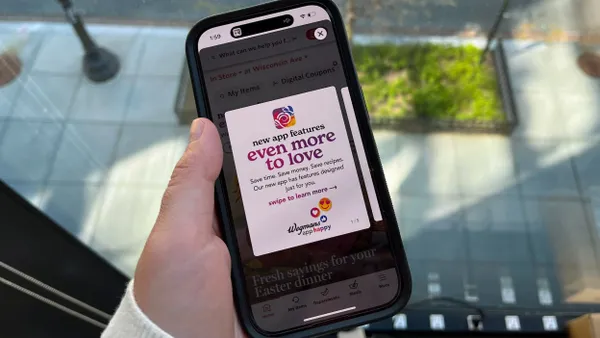"Omnichannel" might be the latest buzzword everyone is talking about, but what does it really mean for retailers or brands? Can omnichannel marketing have a profound and positive effect on your business? The answer is a resounding yes — especially when it's driven by valuable 1st-party data. Here are five ways it can impact your bottom line.
1. Meet customers' needs everywhere and every way they shop
Today's shoppers have changed. They expect to be able to shop whenever, however and wherever they want. Like it or not, it's all about consumption on their terms. Omnichannel marketing gives you the opportunity to engage and motivate existing and new shoppers online, in-store, on mobile — everywhere — 24/7/365. It means you can be everywhere, all at once, in order to meet shopper expectations — so you never miss out on the chance to make a sale or build a lasting, profitable relationship. And, by using the right 1st-party data, you'll always know what those expectations are.
2. Make shopping easy
Right now, people are struggling to figure out how to deal with the number of things being thrown at them on a daily basis — whether it's keeping up with social media, the realities of working from home, juggling work and family, or COVID. They really crave clarity and simplicity. Omnichannel marketing helps customers quickly and conveniently find the best values, for the best products, wherever they choose to shop — on mobile, in a store or on their phone WHILE they're in the store. You can make it feel brainless and painless, because the 1st-part data lets you serve up personalized offers based on their shopping history.
3. Give your shoppers the gift of time
Don't feel like you have enough time in your day to accomplish everything you want — or are supposed — to do? Shoppers feel the same way. And the last thing they want to do is spend valuable time searching for deals, offers or even ideas for dinner. They expect all of that to be delivered right to their devices, and they want it personalized to match their purchase history, brand preferences and buying habits. With an omnichannel approach to marketing that's driven by shopper data, it's about meeting shoppers where they are, not making them take the time to find you.
4. Save your customers money when they need it most.
The past 1-2 years haven't been kind to shopper's wallets, and that's putting it gently. Now, as we see prices for almost everything increasing, that financial pressure is growing. Shoppers want retailers and brands to recognize this pressure, and proactively offer personalized incentives on the products they use — and buy — consistently. This isn't about shoppers going out and scouring the internet for deals. It's about deals coming to them when they need them the most. Omnichannel marketing driven by 1st-party data allows you to do that.
5. Don't just drive sales, create loyal shoppers
Loyalty is at risk now more than ever. Shoppers have more options, and supply constraints are making them search for new brands and products because the ones they normally buy aren't available. How do you plan in a way that creates this great, loyalty driving relationship with shoppers? The answer is, you use first-party data to truly understand those shoppers' needs, create individual plans to meet those needs, and build a personalized, omnichannel strategy to stay ahead of those needs.
Learn more about how Inmar is helping retailers develop and execute their omni-channel initiatives through Inmar's Retail Cloud, powered by the ShopperSync™ CDP platform.










